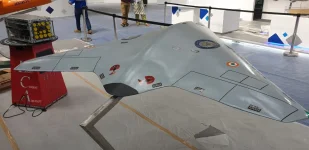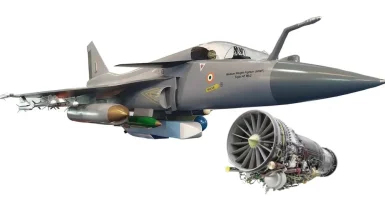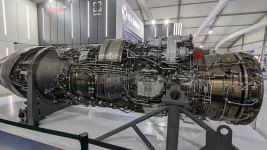- Views: 3K
- Replies: 26
Russian state media has recently initiated a campaign highlighting the Sukhoi Su-34, known by its NATO reporting name "Fullback," as a formidable solution for the Indian Air Force's (IAF) requirement for a deep penetration strike aircraft.
The proposal, featured on the Sputnik India platform, presents the fighter-bomber as a strategic asset that could enhance India's long-range combat capabilities.
This advocacy coincides with the Russian Aerospace Forces accepting a new batch of these aircraft in late 2024, signalling continued confidence in the platform's modern warfare capabilities.
The Su-34 is a twin-engine, all-weather, supersonic medium-range fighter-bomber, primarily designed for tactical deployment against ground and naval targets.
A key argument for its adoption by India is its potential to seamlessly integrate with the IAF's existing infrastructure.
The IAF already operates a large fleet of over 270 Su-30MKI multirole fighters, which share a common lineage with the Su-34 as both were developed from the Su-27 'Flanker' airframe. This commonality could lead to significant cost savings and logistical efficiencies in maintenance, training, and spare parts management.
A notable characteristic of the Su-34 is its unique cockpit design, which features a side-by-side seating arrangement for the two-person crew. This spacious layout, more akin to a larger bomber than a typical fighter, includes enough room for a crew member to stand or rest during flight.
For the IAF, which often conducts long-endurance missions across India's vast northern and western frontiers, this feature is promoted as a crucial advantage for reducing crew fatigue and maintaining peak operational focus during extended combat sorties.
The aircraft boasts impressive technical specifications tailored for deep strike missions. It can carry a substantial weapons payload of up to 8 tonnes, including a versatile mix of precision-guided bombs, air-to-surface cruise missiles, anti-ship missiles, and air-to-air missiles for self-defence.
With a combat radius of approximately 1,100 kilometres on internal fuel, the Su-34 can strike distant targets without heavy reliance on mid-air refuelling. Its ability to reach speeds of Mach 1.8 and perform low-level, terrain-hugging flight allows it to penetrate contested airspace and evade enemy radar systems.
The Su-34's capabilities have been extensively tested in real-world combat situations, particularly in Syria and Ukraine. In these conflicts, it has been used to deliver precision strikes, suppress enemy air defences (SEAD), and launch long-range cruise missiles in highly challenging operational environments.
This combat record demonstrates the aircraft's versatility and resilience, qualities that would be valuable to the IAF as it prepares for a wide spectrum of potential security threats.
From a strategic perspective, the Su-34 is presented as an ideal fit for India's operational theatres. Its long range and heavy payload are well-suited for missions deep inside territories protected by robust air defence networks.
Furthermore, its proficiency in maritime strike roles, with the ability to carry potent anti-ship missiles, would strengthen India's military posture in the increasingly contested Indian Ocean Region.
Russian sources argue that the Su-34 offers these capabilities at a lower acquisition and operational cost than comparable Western aircraft, making it an economically viable option for India as it continues its ambitious military modernization programme within a constrained budget.




